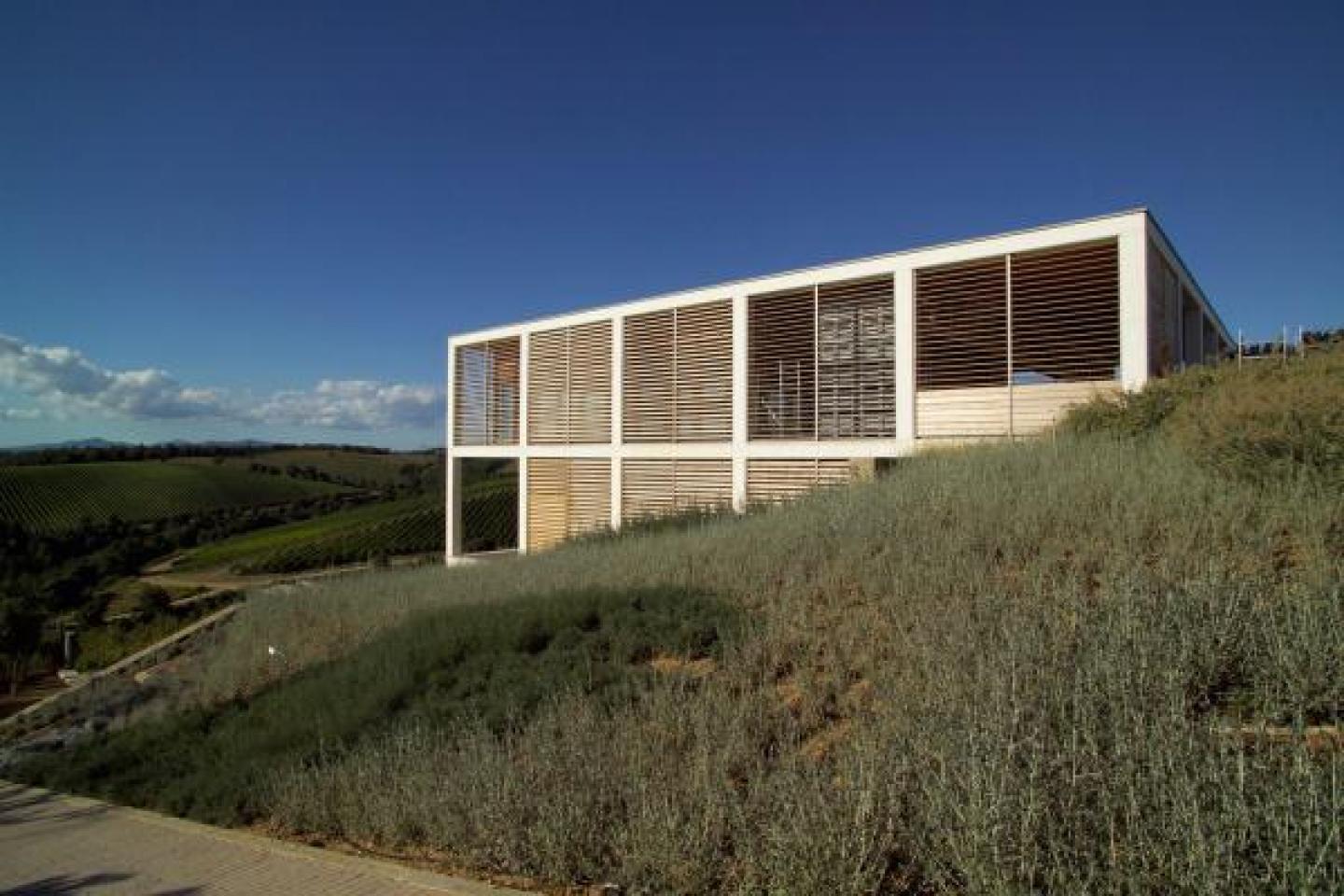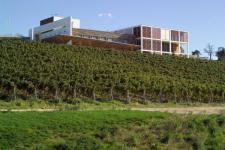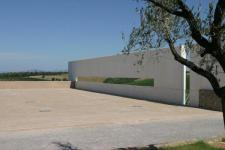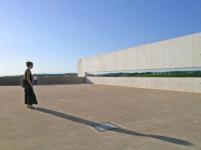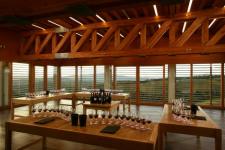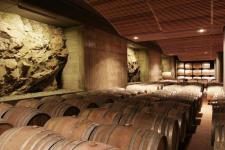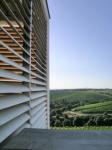The building is a wooden box. The warehouse, the plant rooms, the barn for farm equipment have been built inside the hill. The only element that emerges is a white wall that, issuing from the hill, organises and gives order to the exterior spaces needed to manoeuvre the vehicles. The desire to design spaces rather than a building appears even more evident in the body of the structure that appears beyond the “wooden box” and rises above it at the southwest corner. An elemental, airy cage made of pillars and beams in white cement that, like a grapevine arbour, leans almost temporarily over the underground structure. A white frame capturing the surrounding scenery as if in a net; a net that, over time, fills up with moments connected to the production and marketing of wine as well as to the promotion of the territory. A space that is the opposite of and yet complementary to the solid, reconstructed womb of the hill, whose precious product is transformed and jealously protected; a space throbbing with activity connected to knowing wine, tasting it, understanding the depths of it, scientifically and convivially. The bio-climatic solutions that regulate temperature and ventilation have certainly guided the project, giving character to the design in its entirety. A concrete framing to contrast with the pressure of the hill and the heavy burdens of the vehicles unloading grapes on the roof of the cellar. Ventilated walls of wood wherever the thermal inertia needs to be protected, directed and re-balanced. Natural wooden staves to filter the direct sunlight. Zinc titanium covering is used for water proofing. Low-emissivity opal glass windows to balance natural light.
It is by turning to so-called bioengineering that, in the Cantina di Collemassari, the microclimate needed to produce and preserve wine, from humidity to energy requirements, takes place naturally. Not only is the climate controlled by selecting natural passive energy but also the handling first of the grapes, then of the grape must and of the wine, is carried out using only gravity and no machinery which, besides being expensive, would strain the product, diminishing its quality. Another factor that I believe is fundamental for the sustainability of a farm is that not even one drop of water be wasted during the production stages, wherever water is used in abundance. Water, including the underground drainage of the barrel store that is always kept somewhat filled to guarantee the right degree of humidity, is completely recovered, used more than once and, finally, sent on to a single phyto-purification plant from which the purified water runs into a basin next to a stream of water where the water is drawn out again to irrigate the vineyards while also creating an important wetland oasis of high naturalistic value.
2000
2005
Winery Collemassari s.p.a. by Edoardo Milesi in Italy won the WA Award Cycle 2. Please find below the WA Award poster for this project.
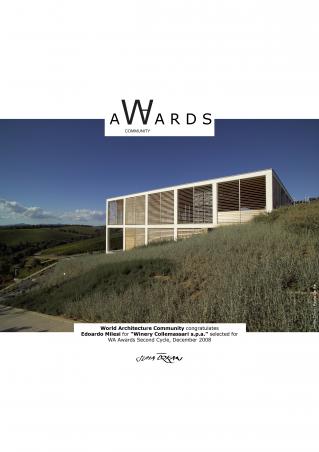
Downloaded 245 times.
Favorited 4 times
